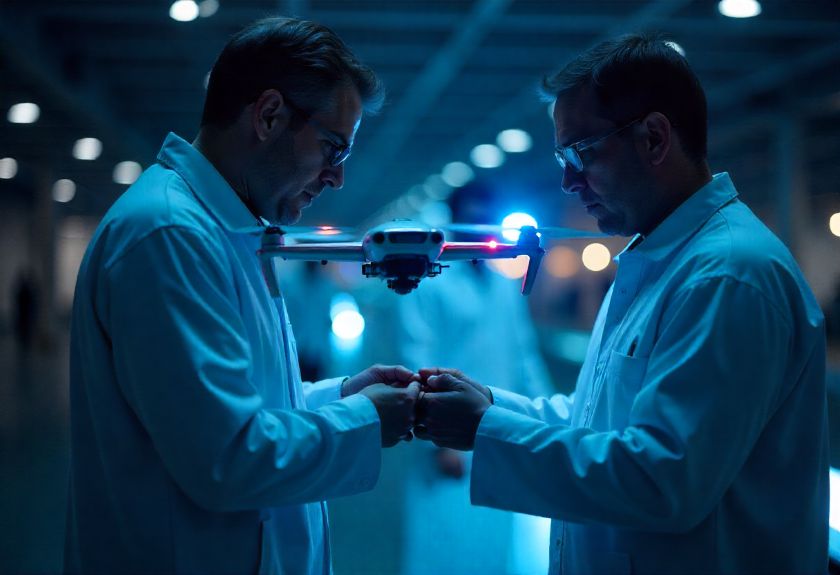Thursday, July 24, 2025

NASA engineers at Glenn Research Center in Cleveland, Ohio, recently conducted groundbreaking tests of advanced fifth-generation (5G) cellular technology. The tests aim to improve connectivity, efficiency, and safety for future air taxi operations not only in Cleveland but across major urban centers in the United States.
This advanced air mobility initiative involved comprehensive flight trials carried out between April and May 2025. NASA researchers assessed how existing 5G cellular infrastructure can be utilized to facilitate communication between air taxis, control centers, and other aircraft.
Cities to Benefit from NASA’s Air Mobility Initiative
While the tests were conducted over Cleveland airspace, the findings will have broad implications for enhancing air taxi operations in cities such as New York City, Los Angeles, Dallas, San Francisco, Miami, Chicago, and other densely populated urban areas where air taxis are anticipated to operate.
Leveraging Existing 5G Networks for Aviation
Casey Bakula, lead NASA researcher at Glenn, explained that the goal of this project is to explore whether the aviation industry can leverage existing cellular networks instead of creating entirely new systems from scratch. The aim is to assess if 5G technology can meet most of the communication requirements—around 80%—leaving researchers to adapt and refine the remaining 20% specifically for aviation.
This approach could save significant resources, shorten the timeframe for developing new aviation technologies, and accelerate the implementation of air taxis in American cities.
Why 5G Technology Is Ideal for Air Taxis
5G networks offer key benefits for air taxis, including the ability to rapidly handle large amounts of data with minimal delays. Unlike traditional satellite communications, 5G networks can transmit precise, real-time location and flight data. This capability is crucial for safe navigation and collision avoidance, particularly in congested urban skies filled with tall buildings and frequent air traffic.
Detailed Testing Procedures at Glenn Research Center
NASA’s Glenn Research Center equipped its Pilatus PC-12 research aircraft with specially developed radio systems capable of 5G communications. Complementary ground-based equipment was installed on a facility rooftop at Glenn, enabling detailed testing of air-to-ground connectivity.
The FAA authorized NASA to conduct these experimental flights, during which the aircraft followed varied routes designed to challenge signal strength, quality, and reliability. Researchers recorded how urban obstacles, altitude changes, and distance impacted communication stability.
Early Findings and Technical Challenges
Initial tests successfully demonstrated basic functionality, helping NASA refine its procedures and confirming the viability of using 5G technology in aviation environments. However, engineers identified potential issues, notably a phenomenon called “propeller modulation,” where rotating aircraft blades partially block and disrupt radio signals.
Since future air taxis will likely have multiple propellers operating at lower altitudes, understanding and mitigating this interference is critical. NASA plans further investigations to address this issue.
Supporting Future Aviation Infrastructure
Data from these initial Cleveland-based tests will serve as benchmarks for future research and development efforts. Upcoming studies will explore network speed limits, signal reliability, and synchronization between aircraft and ground communication networks.
The detailed results and best practices derived from NASA’s tests will help the Federal Aviation Administration (FAA) and aviation industry partners refine regulations and standards necessary for safely integrating air taxis into urban transportation networks.
Next Steps: Broadening the Impact to Major U.S. Cities
Following these successful Cleveland trials, NASA plans to collaborate further with aviation companies, telecommunication providers, and federal regulators to deploy advanced air mobility solutions. The agency’s goal is to establish reliable, secure, and efficient air taxi networks that could revolutionize transportation in major metropolitan areas nationwide.
Cities like New York, Los Angeles, Dallas, Chicago, Miami, and San Francisco, which face daily traffic congestion challenges, will particularly benefit from NASA’s pioneering research into 5G-powered air mobility.
This cutting-edge project is managed through NASA’s Air Mobility Pathfinders under the Airspace Operations and Safety Program, aligning closely with NASA’s Advanced Air Mobility Mission goals.